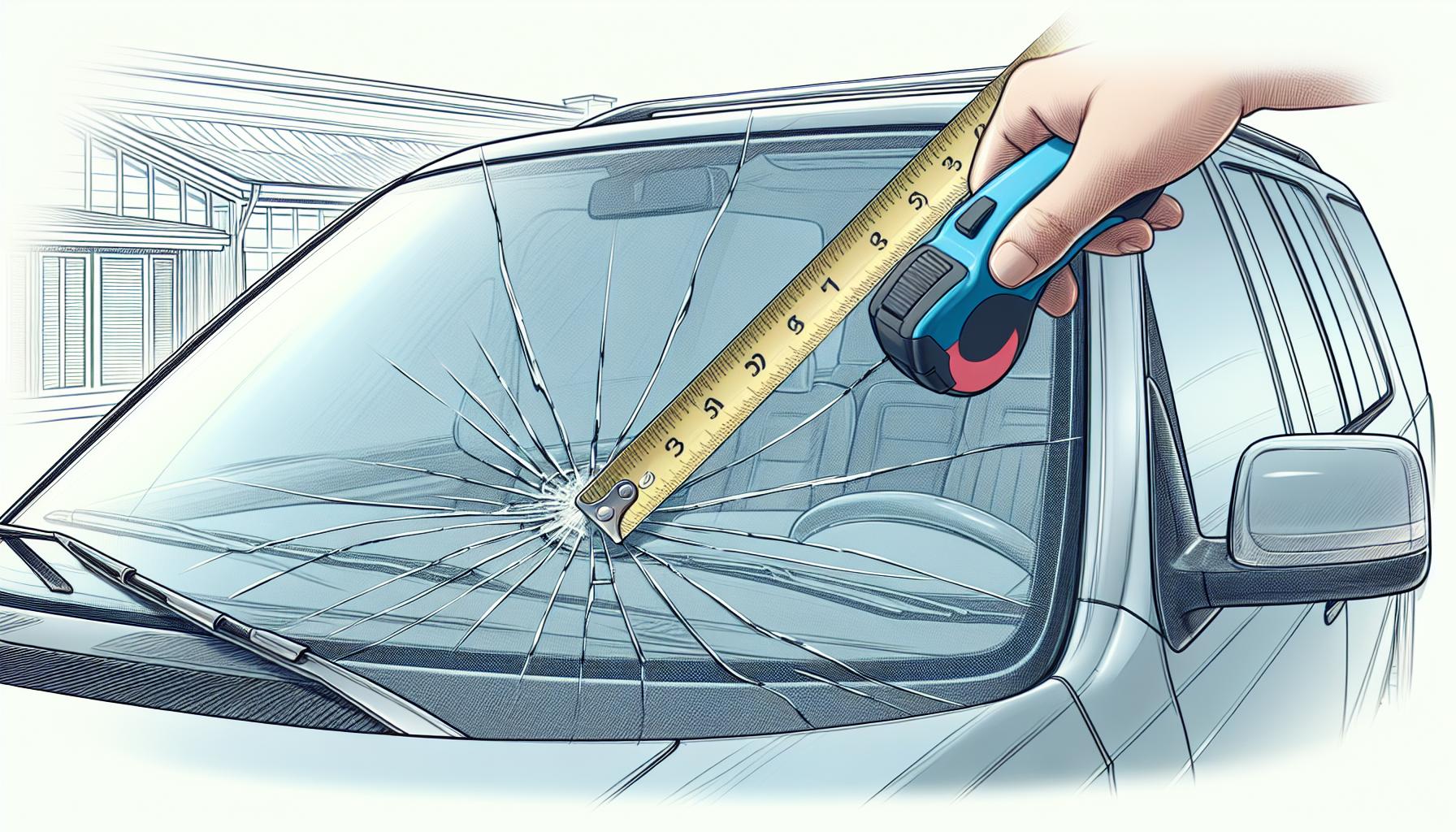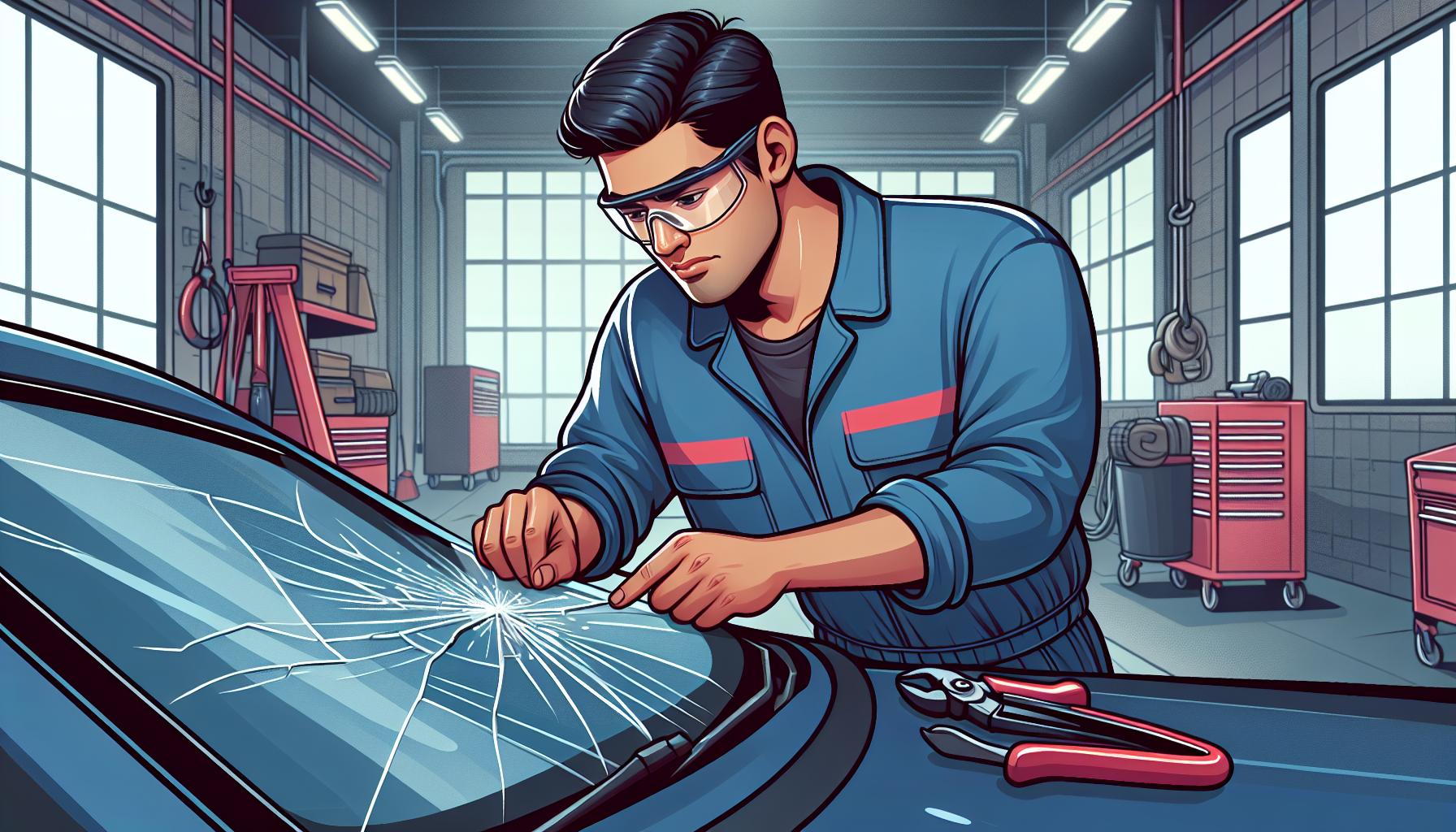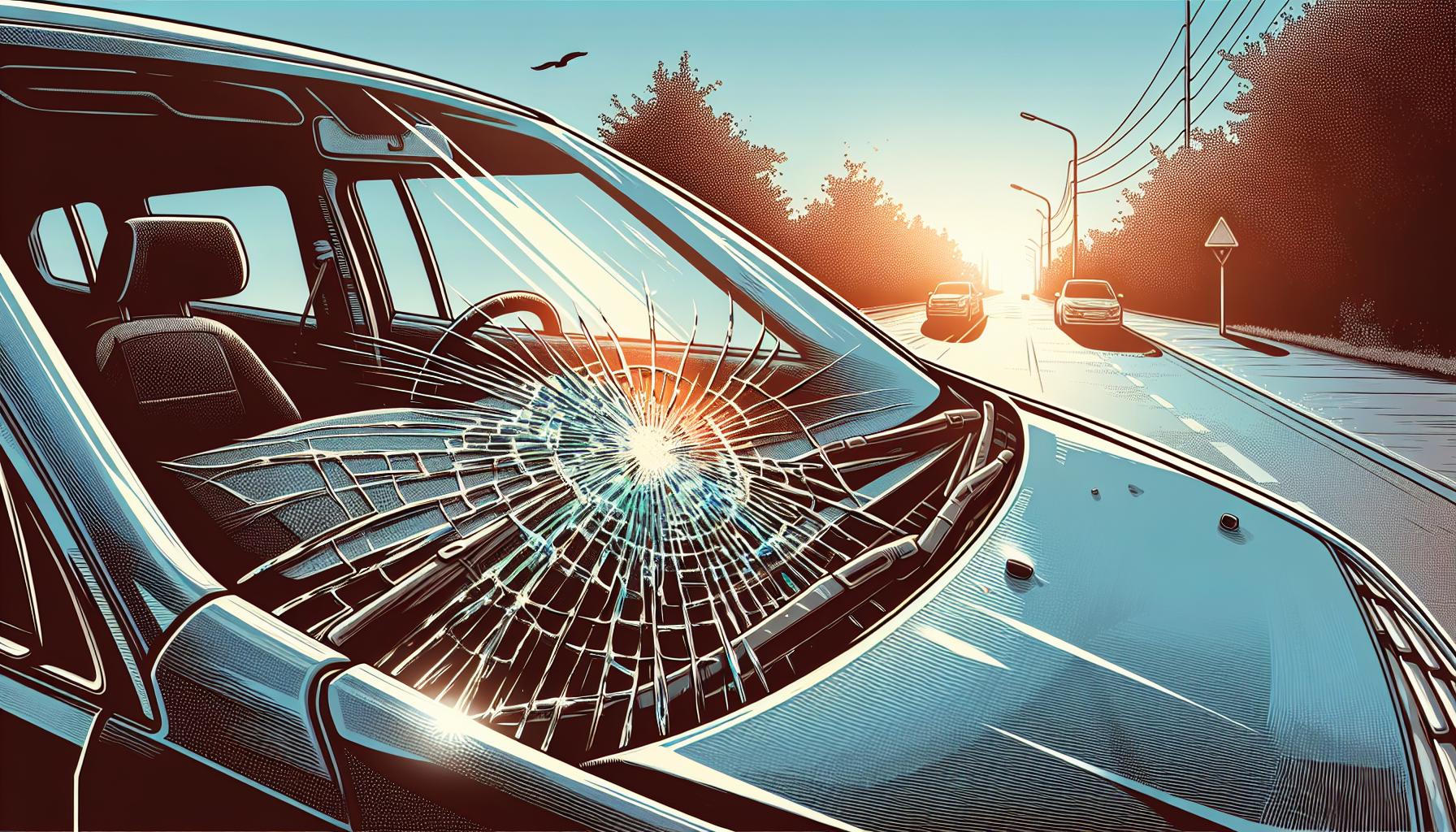Driving with a cracked windshield can be more than just an eyesore—it might also raise questions about safety and legality. If you’ve got an upcoming vehicle inspection, you’re probably wondering whether that crack will cause you to fail. It’s a common concern, and the answer isn’t always straightforward.
The rules about windshield damage vary depending on where you live and the severity of the crack. Some states are stricter than others, and inspectors often consider factors like size, location, and whether the damage obstructs your view. Knowing what to expect can save you time and stress when it comes to passing your inspection.
Understanding how windshield damage is assessed during inspections can help you decide if repairs are necessary or if you’re good to go. Let’s dive into the details so you can hit the road with confidence.
Understanding Windshield Inspection Requirements
Windshield inspections prioritize safety by ensuring visibility and structural integrity. Inspection standards vary by state, but some common themes apply universally.
Importance Of A Clear Windshield
A clear windshield is crucial for visibility and reducing driving hazards. Cracks or chips obstructing the driver’s line of sight create a safety risk. Damage in areas swept by wipers is especially problematic, as it can distort vision during adverse weather conditions. Additionally, a compromised windshield affects the vehicle’s structural strength, especially in rollovers or collisions.
Common Inspection Criteria
Inspection criteria for windshields focus on damage size, position, and impact on safety. Cracks longer than 6 inches and chips larger than ¾ inch commonly fail inspections. Damage within the “acute area,” directly in front of the driver, is usually unacceptable, regardless of size. States often disregard cracks outside the driver’s view or minor chips on the passenger side, as they don’t compromise safety directly. Uniformity in requirements may vary, so checking local regulations ensures compliance.
Factors Affecting Inspection Success

Inspection success depends on criteria like the size, location, and impact of the windshield crack on safety. State-specific laws also play a pivotal role in determining if a cracked windshield passes.
Size And Location Of The Crack
Large cracks or chips, especially those exceeding 6 inches or ¾ inch in diameter, often result in inspection failure. Damage within the “acute area,” the driver’s direct line of vision, usually faces stricter scrutiny. Cracks located in corners or along edges can compromise the windshield’s structural integrity, making inspection failure likely.
State-Specific Inspection Rules
State laws dictate varying standards for windshield condition during inspections. For example, states like Texas and Virginia fail vehicles with cracks obstructing the driver’s view, while others like Florida may permit minor non-obstructive damage. Verifying local regulations ensures clarity on acceptable damage limits before inspection.
Safety Concerns And Visibility Issues
Windshields must meet safety requirements to ensure clear visibility for drivers. Cracks in the swept area of windshield wipers may distort the view, hindering safe driving conditions. Structural weaknesses from severe damage increase the risk of injury in collisions, further emphasizing visibility and safety as critical inspection factors.
Repair Or Replace: What To Do Before Inspection

Addressing windshield damage before an inspection is essential for passing state-specific safety checks. Determining whether to repair or replace depends on the extent, location, and severity of the damage.
When To Opt For Repairs
Repairs work for small chips under ¾ inch or short cracks less than 6 inches. Minor damage outside the driver’s direct line of sight improves safety without full replacement. For example, chips in areas not swept by windshield wipers can be professionally filled to restore clarity and structural integrity. Most states allow repaired windshields if the damage no longer obstructs visibility or compromises safety.
When Replacement Is Necessary
Replacement becomes necessary for cracks over 6 inches or damage in the acute area—directly in front of the driver—since these fail inspections in many states. Broad spider webbing or multiple intersecting cracks also make replacement a better option. Additionally, extensive damage on edges weakens the windshield’s structural strength, risking collapse in an accident. States enforcing strict visibility criteria often require windshield replacements to meet safety standards.
Legal And Financial Implications

Driving with a cracked windshield impacts both compliance with state laws and potential repair or replacement costs. Legal issues and insurance policies weigh heavily on decisions regarding damaged windshields.
Driving With A Cracked Windshield
State laws dictate whether it’s legal to drive with a cracked windshield based on the location, size, and impact of the damage. In most cases, cracks obstructing visibility or compromising structural integrity make driving illegal. Law enforcement can issue citations if a crack creates a safety hazard, particularly in the driver’s field of view. Repeated violations may result in fines and points on a driving record.
Inspections often fail vehicles with obstructive windshield damage to ensure safety. Non-compliance with repair mandates could invalidate vehicle registration in some states. Repairing cracks promptly helps avoid legal repercussions and prevents further damage.
Insurance Coverage For Repairs And Replacements
Insurance policies for windshield damage vary by provider and coverage type. Comprehensive auto insurance commonly covers repair or replacement, although deductibles may apply. For smaller cracks, repairs are often covered in full under policies with glass repair benefits. For example, insurers may waive deductibles for minor repairs to encourage prompt action.
Policies without comprehensive coverage leave drivers responsible for all costs. Repair expenses average $50-$150 for chips, while replacements range from $200-$400 for standard windshields, increasing with advanced features like sensors or special coatings. Reviewing insurance terms ensures you’re aware of coverage limits and potential out-of-pocket expenses for windshield damage.
Conclusion
A cracked windshield can be more than just an eyesore—it impacts safety, legality, and inspection outcomes. Understanding your state’s regulations and addressing damage promptly is key to avoiding fines or failed inspections. Whether it’s a minor repair or a full replacement, taking action ensures your vehicle remains safe and compliant. Don’t overlook the importance of clear visibility and structural integrity when preparing for an inspection.
Frequently Asked Questions
Can I drive with a cracked windshield?
Yes, but it depends on the size, location, and severity of the crack. Driving with damage that obstructs your view or compromises the windshield’s structural integrity is unsafe and often illegal, leading to inspection failures or fines in many states.
Will a cracked windshield fail my vehicle inspection?
It might. Cracks larger than 6 inches, chips over ¾ inch, or damage in the driver’s line of sight or the “acute area” directly in front of the driver typically result in inspection failure. Check your state’s specific rules for a clear understanding.
Is it better to repair or replace a cracked windshield?
Repairs work for small chips under ¾ inch or cracks less than 6 inches outside the driver’s view. Replacement is needed for larger cracks, multiple intersecting damages, or any damage in areas critical to visibility or structural integrity.
Can I claim windshield repair or replacement through insurance?
Yes, if you have comprehensive coverage. Many policies cover full repair costs for minor chips and cracks, while replacements may involve deductibles. Without comprehensive coverage, you’ll need to pay out-of-pocket.
How much does windshield repair or replacement cost?
Windshield repair usually costs $50-$150, while replacement ranges from $200-$400 depending on factors like vehicle model and damage severity. Insurance with glass repair benefits may reduce or eliminate these costs.
Are there legal consequences for driving with a cracked windshield?
Yes, in states where windshield laws exist. Driving with damage that obstructs visibility can result in citations, fines, or inspection failure. Severe non-compliance could also invalidate your vehicle registration.
What’s considered the “acute area” of a windshield?
The acute area is the section directly in front of the driver, commonly swept by the windshield wipers. Damage in this area is scrutinized heavily during inspections due to its impact on visibility and safety.
How do I know if my cracked windshield is safe for inspection?
Check the size, location, and severity of the damage. Cracks under 6 inches and chips smaller than ¾ inch, especially outside critical areas, may pass inspection. Refer to your state’s regulations for precise guidelines.
What are “state-specific” windshield regulations?
Each state has unique laws regarding windshield damage and inspections. Some states permit minor cracks outside the driver’s view, while others strictly fail vehicles with any visible damage. Research local laws for compliance.
What should I do before an inspection if my windshield is cracked?
Assess the damage. For minor chips or cracks, get them repaired to avoid inspection issues. For extensive damage, replace the windshield beforehand to ensure compliance with safety standards and avoid failure.